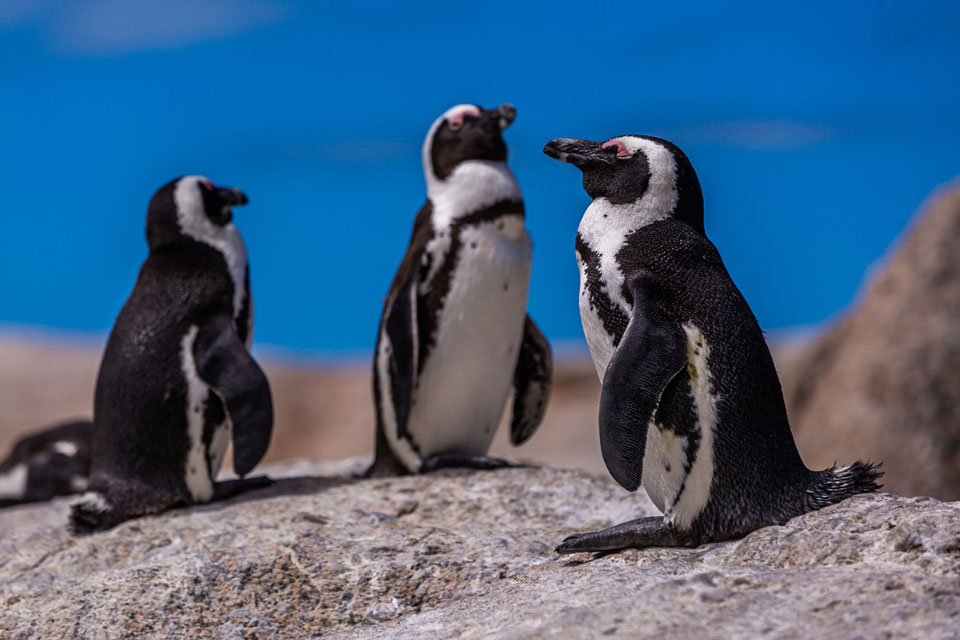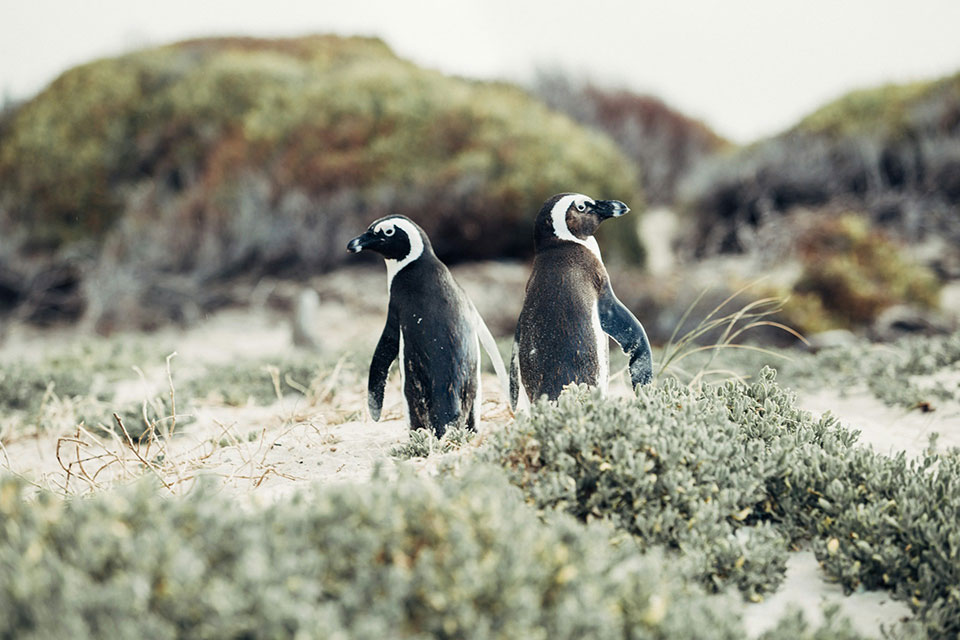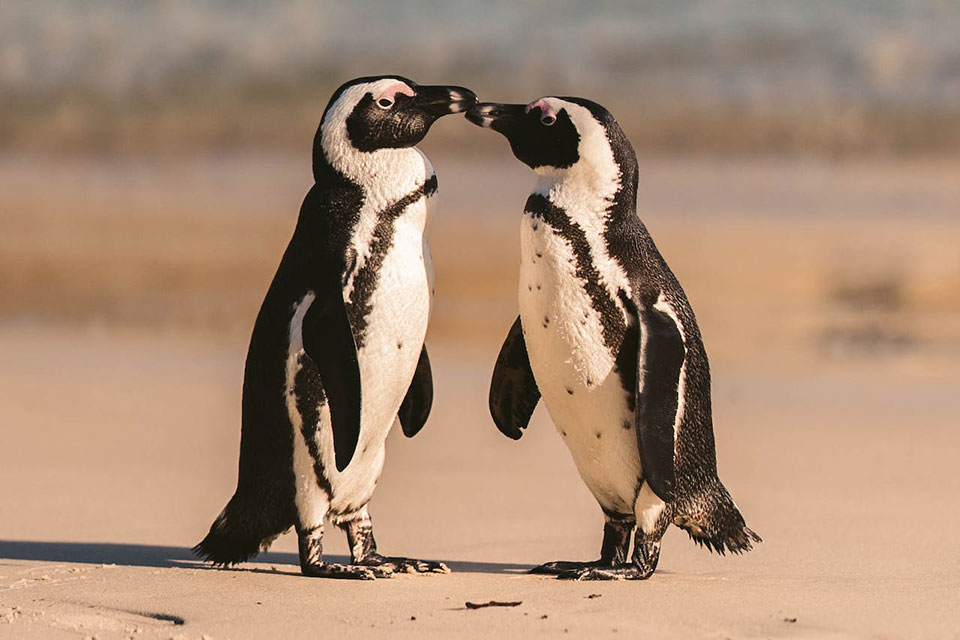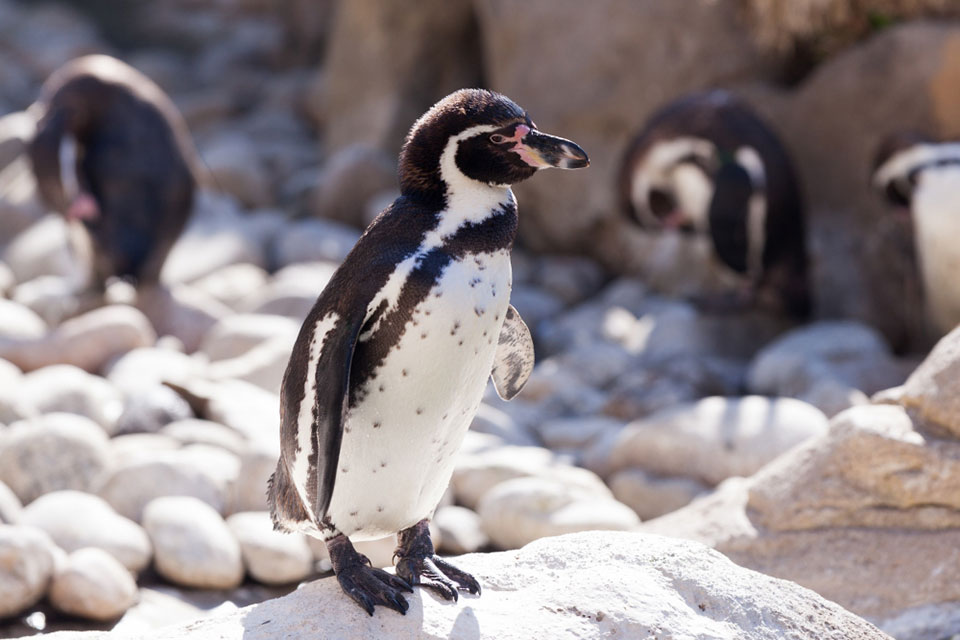The African penguin, also known as the Cape penguin or South African penguin, is a fascinating species that can only be found in the waters of southern Africa.
They inhabit the coastlines of South Africa and Namibia, making their homes on islands and some mainland sites.
The African penguin has a total of 24 known colonies scattered between Namibia and Algoa Bay near Port Elizabeth, South Africa. These colonies are located on various islands, where the penguins nest in burrows, sandy soils, or under boulders and bushes.
Among these colonies, Boulders Beach near Simon’s Town and Stony Point in Betty’s Bay have become popular tourist destinations due to the presence of these charming creatures.
Key Takeaways:
- The African penguin is confined to southern African waters, primarily living along the coast of South Africa and Namibia.
- They inhabit islands and some mainland sites, with 24 known colonies between Namibia and Algoa Bay near Port Elizabeth.
- Boulders Beach and Stony Point are two famous mainland colonies that have attracted tourists.
- African penguins nest in burrows, sandy soils, or under boulders and bushes.
- Conservation efforts are crucial to protect their habitat and ensure the survival of this unique species.
African Penguin Description and Adaptations

The African penguin, also known as the Cape penguin or South African penguin, is a remarkable bird that has unique characteristics and adaptations. These flightless birds have evolved to thrive in both the sea and on land, making them well-suited to their natural habitat.
Distinct Physical Features
African penguins have a streamlined body and modified wings that have transformed into flippers, enabling efficient swimming and diving.
Their thick coat of overlapping feathers not only provides insulation but also serves as a waterproof barrier, allowing them to navigate through the water with ease. The penguins’ upper parts are black, while their underparts are white with a distinctive black band.
They also have pink patches of skin above their eyes and a black facial mask, giving them a unique and recognizable appearance.
Adaptations for Survival
With an average height of 60-70 cm and weighing between 2-5 kg. African penguins are perfectly suited for their natural range. They can be found within 40 kilometers of the shore, coming on land to breed, molt, and rest.
These penguins have developed vocalizations and displays to communicate with each other, and their loud, donkey-like braying noises are a characteristic feature. They are remarkable swimmers, reaching speeds of up to 20 km/h and diving up to 130 m (430 ft) deep.
Unique Thermal Regulation
One of the most fascinating adaptations of African penguins is their ability to regulate their body temperature. The distinct pink patches of skin above their eyes help them cool down or warm up as the external temperature changes.
They use their blood vessels in those areas to either dissipate heat or conserve it, ensuring their bodies remain at the optimal temperature for survival.
African penguins are a testament to the incredible diversity of wildlife in southern Africa. Their natural habitat and adaptations allow them to thrive in their unique environment, making them an important species to protect and preserve.
Threats to African Penguins

African penguins, while beloved by tourists and visitors, are facing numerous threats to their survival.
One major concern is their conservation status, with the species being classified as endangered by the IUCN Red List. This classification is due to the rapid decline in their populations, which have decreased by approximately 90% since the early 1900s.
The African penguins’ decline can be attributed to various factors, including overexploitation for food, habitat modification of nesting sites, oil pollution, and competition for food resources with commercial fishing.
One notable threat to African penguins is the disruption of their nesting sites. The popular tourist destination, Boulders Beach, is home to a colony of these penguins.
However, the increased human presence has resulted in habitat disturbance, which can negatively impact their breeding and nesting behaviors. It is crucial to balance tourism with conservation efforts to ensure the long-term survival of these iconic birds.
Another significant threat to African penguins is climate change. Global warming and its effects on the marine and atmospheric environment pose a significant challenge to their habitat.
Rising sea levels and changing ocean temperatures can disrupt the penguins’ food chain and availability of prey, leading to reduced breeding success and overall population decline. Efforts to combat climate change are essential in protecting the African penguin and its unique habitat.
The importance of conservation efforts
To safeguard African penguins and prevent their extinction, conservation efforts are crucial. Several initiatives are already underway, including the establishment of protected areas and conservation programs aimed at preserving their habitat and reducing human-induced threats.
These efforts focus on raising awareness, implementing sustainable fishing practices, and reducing pollution in penguin habitats.
By supporting these conservation initiatives and promoting responsible tourism practices, we can contribute to the protection and preservation of African penguins.
Together, we can ensure a future where these charismatic birds continue to thrive along the coastal areas of southern Africa, enriching our natural heritage for generations to come.
African Penguin Breeding and Life Cycle

African penguins are fascinating creatures that have unique breeding habits and a remarkable life cycle. They form breeding colonies in specific locations along the coast. These colonies serve as important nesting sites for the penguins.
Here are some key aspects of their breeding and life cycle:
- Colonies: African penguins breed in colonies, which are large groups of penguins that come together to mate and raise their young. These colonies are typically found on islands or in protected mainland areas. The colonies provide a sense of safety and security for the penguins during the breeding season.
- Nest-Burrows: African penguins create nest-burrows to lay their eggs and raise their chicks. They dig burrows in layers of guano, sandy soils, or utilize natural shelters such as under boulders or bushes. This provides protection from predators and harsh weather conditions.
- Incubation and Parental Care: Both parents take turns incubating the eggs, which lasts for around 40 days. After hatching, the chicks are brooded by their parents for the first 15 days. Once they are a bit older, they join crèches with other chicks while their parents go out to forage for food.
- Fledging and Independence: African penguin chicks fledge, or grow feathers suitable for flight, at around 60 to 130 days old. They become independent from parental care approximately three months after hatching. After about 12-22 months, they return to their colony of birth to molt into their adult plumage.
African Penguins in the Wild
The breeding and life cycle of African penguins reflect their adaptation to life in both the sea and on land. It is fascinating to witness their colony dynamics, nest-building behaviors, and the care they provide to their young.
These penguins play a vital role in their ecosystem and contribute to the biodiversity of the coastal areas of southern Africa.
“The breeding colonies of African penguins are a sight to behold. The hustle and bustle of penguins, the sounds of their braying calls, and the intricacy of their nest-burrows create a unique and vibrant atmosphere.” – Wildlife Conservation Society
Understanding the breeding and life cycle of African penguins is crucial for their conservation. By protecting their nesting sites and ensuring a healthy marine environment, we can help these remarkable birds thrive in the wild.
Join us in our efforts to preserve the African penguin for future generations to marvel at.”
Conclusion
The African penguin is an incredible species that holds a special place in our hearts. We have come to appreciate its unique features and charming personality. However, we cannot ignore the challenges this penguin is facing in terms of conservation.
Currently, the African penguin is classified as endangered due to rapid population declines. This decline is alarming, with approximately 90% reduction since the early 20th century. If we do not take immediate action, the African penguin may become extinct in the wild by 2026.
That is why conservation efforts are crucial. We must protect their habitat, reduce threats, and ensure the survival of this remarkable species. By establishing protected areas and implementing conservation programs, we can work towards a brighter future for the African penguin.
Together, we can make a difference and secure the future of the African penguin population. Let us come together and take action to protect this beautiful species for generations to come.
FAQ
Where do African penguins live?
African penguins are primarily found along the coast of South Africa and Namibia. They live on islands, with known colonies located between Namibia and Algoa Bay near Port Elizabeth, South Africa.
There are also two mainland colonies, one at Boulders Beach near Simon’s Town and another at Stony Point in Betty’s Bay.
What is the description and adaptations of African penguins?
African penguins are flightless birds that are well adapted to both life in the sea and on land. They have a streamlined body and wings modified into flippers for efficient swimming. They have a thick coat of overlapping feathers that assist with waterproofing, wind resistance, and insulation.
African penguins have black upper parts, white underparts with a black band, pink patches of skin above their eyes, and a black facial mask. They grow to an average height of 60-70 cm and weigh between 2-5 kg.
What are the threats to African penguins?
African penguins are classified as endangered due to rapid population declines. Their populations have reduced by approximately 90% since the beginning of the 20th century.
Threats include overexploitation for food, habitat modification of nesting sites, oil pollution, and competition for food resources with commercial fishing. Global warming and changes in the marine and atmospheric environment are also significant threats.
How do African penguins breed and what is their life cycle?
African penguins are monogamous and breed in colonies. Breeding season peaks from March to May in South Africa and November to December in Namibia.
They excavate nest burrows in guano, sandy soils, or utilize natural shelters such as under boulders or bushes. Incubation of the two eggs in a clutch is shared equally by both parents and lasts for around 40 days. Chicks fledge at 60 to 130 days and become independent of parental care three months after hatching.
They will return to their colony of birth after about 12-22 months to molt into their adult plumage.


